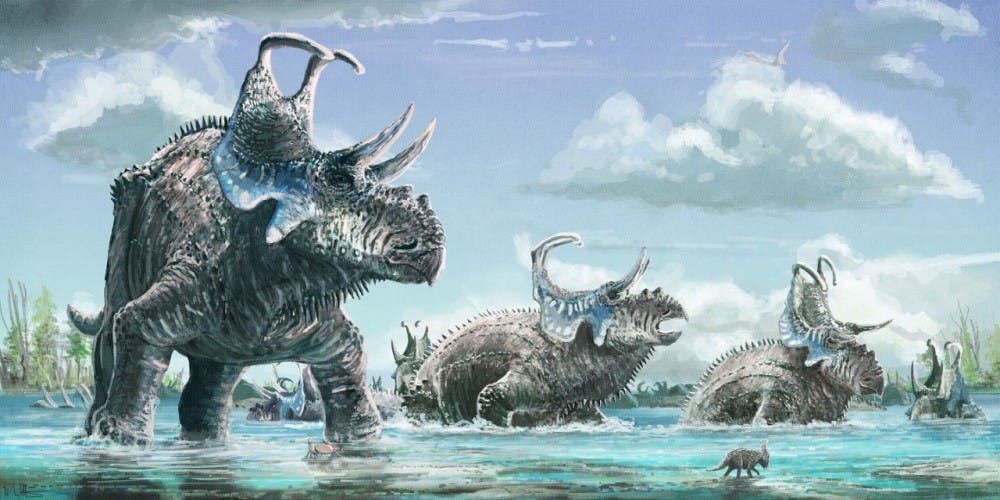Fragments of Machairoceratops cronusi were found at the Grand Staircase-Escalante National Monument in Utah.
For Ohio University graduate student Eric Lund, the chance to excavate fossils and be part of the discovery of a new dinosaur was a “real dream come true” — one he has been aspiring to since age 4.
Just weeks after the college’s involvement in the discovery of Sarmientosaurus musacchioi in Argentina was announced, another group of scientists in OU’s Heritage College of Osteopathic Medicine have been credited with aiding a different discovery — that of Machairoceratops cronusi.
Over the course of three field seasons, scientists were able to unearth fragments of horncores and other skull pieces at the Grand Staircase-Escalante National Monument, a prominent archeological site in southern Utah.
The dinosaur’s discovery was an effort by volunteers from OU and the Natural History Museum of Utah, with the help of professional excavators.
Lund served as the lead author of the study, which was recently published in PLOS ONE, a peer-reviewed scientific journal. Working alongside him was OU-HCOM anatomy professor Dr. Patrick O’Connor, who has been involved in a number of collaborative field paleontology projects in places such as Tanzania, Madagascar, Egypt and Antarctica.
Estimated to have been six to eight meters long and weighed approximately one to two tons, Machairoceratops cronusi is a member of a group of large-bodied ceratopsians, or horned dinosaurs, that populated North America and Asia as the age of dinosaurs neared its final stages.
“Machairoceratops is important as it represents a new species of horned dinosaur (a ceratopsian) from North America,” O’Connor said in an email. “And despite a lengthy period of time (since the mid-late 1800s) that people have been exploring for fossils in this part of the world, we are still finding species new to science today.”
According to researchers, Machairoceratops lived approximately 77 million years ago, near the end of the Cretaceous Period, while North America as it is known today was divided by an epicontinental sea, which is a sea within a continent. Although numerous horned dinosaurs have been discovered in North America, particularly in the northern regions, relatively few have been discovered in the southern portion of the continent.
“The significance of our study is the discovery of Machairoceratops provides insights into the early evolution of ceratopsians from the Wahweap Formation (in southern Utah and northern Arizona) and the southern region of Laramidia,” Lund said in an email. “For example, the retention of several cranial characters by Machairoceratops suggests there may have been some type of natural or sexual stabilizing selection constraining the evolution of ceratopsians from the Wahweap Formation.”
For O’Connor, the moment comes as a chance to shed light on the importance of researching dinosaurs, even in the modern age.
“Paleontological research is just one of many ways in which evolutionary biologists attempt to track the fit between organisms and their environments over long time periods,” O’Connor said. “So the study of dinosaurs in the modern age is one important way that we can study the relationship between changes on the surface of the Earth and how this impacts the organisms that live here.”
@lauren__fisher
lf966614@ohio.edu






